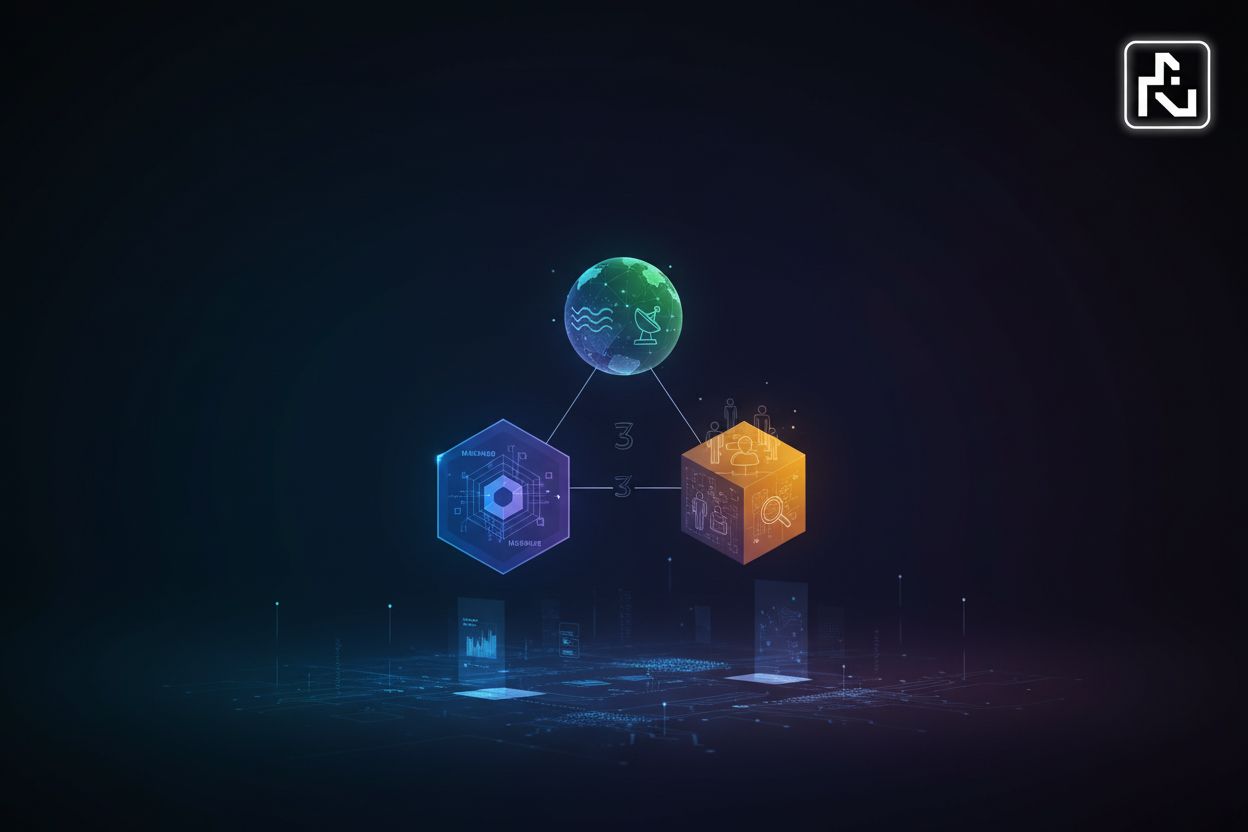Understanding Digital Marketing Strategy Frameworks
TL;DR
Why Digital Marketing Frameworks Matter
Alright, let's dive into why digital marketing frameworks aren't just some fancy consultant talk, but actually, matter. Think of that time you tried assembling Ikea furniture without the instructions, yeah? Absolute chaos! That's kinda what marketing without a framework feels like.
A digital marketing framework is basically your strategic blueprint. It provides structure, right? For planning, executing, and even analyzing all your marketing efforts. It's like, the foundation that ensures consistency and scalability across all your campaigns. Without one, it's easy to end up throwing spaghetti at the wall to see what sticks, and nobody got time for that.
Here's why they're important, in a nutshell:
- Keeps things consistent: Ensures branding and messaging aligns across all channels. For example, imagine a brand that uses a playful, casual tone on social media but then switches to a super formal, corporate voice in its email newsletters. This inconsistency can confuse potential customers and make the brand feel less trustworthy, ultimately hurting sales and brand loyalty. A framework ensures everyone is on the same page, using the same voice and visual identity, no matter the platform.
- Scales effectively: Provides a repeatable strategy as your business grows. When you have a defined framework, you're not reinventing the wheel every time you expand. For instance, if your framework outlines a clear process for customer acquisition, you can apply that same process to new markets or product lines. This means you can onboard new team members more easily and ensure that your marketing efforts can grow in complexity and reach without breaking.
- Helps engage strategically: Targets the right audience with the right message at the right time. A framework forces you to think about who you're talking to and what they need. This means you're not just blasting generic messages everywhere. Instead, you're crafting specific content and offers for different segments of your audience, at different points in their journey with your brand, which makes your marketing much more impactful.
- Maximizes ROI: Optimizes marketing spend by focusing on tactics that drive measurable results. When you have a framework, you're not just spending money on random ads. You're investing in activities that are proven to work within your strategic approach. This allows you to track what's delivering the best return and reallocate resources accordingly, ensuring your budget is used as efficiently as possible.
So, what's the difference between a framework and a strategy anyway? A marketing framework provides the theory and principles that guide your approach, like the rules of the game. The marketing strategy is how you put that framework into action, including the specific campaigns you run to achieve your goals.
Imagine a healthcare provider using a framework to map out their patient engagement. Or a retailer using one to personalize the customer journey. These frameworks help align marketing with overall business goals.
As the American Marketing Association notes, a solid framework can be the difference between guesswork and predictable success.
Popular Digital Marketing Strategy Frameworks
Alright, so you're thinking about digital marketing frameworks, huh? Ever felt like you're just throwing darts in the dark hoping something sticks? Yeah, me too! That's exactly why frameworks are so darn helpful.
A digital marketing strategy framework is your blueprint, plain and simple. It gives you structure for planning, doing, and even figuring out what went wrong (or right!) with your marketing stuff. Think of it as the backbone that keeps everything consistent and scalable.
Without a framework, well, it's easy to get lost in all the noise, right? You end up trying every shiny new tactic without seeing if it actually works for you. And that's a recipe for wasted time and money.
Here's the difference between a framework and a strategy: A framework is the overarching structure and guiding principles, like the architecture of a house. A strategy is the specific plan for how you'll use that structure to achieve your goals, like the interior design and furniture placement. The framework provides the "how-to" for your marketing approach, while the strategy details the "what" and "when" of your campaigns.
There's a bunch of different frameworks out there, each with its own way of doing things. Here's a quick rundown of some of the more popular ones:
RACE: Reach, Act, Convert, Engage. (The RACE Framework: A practical digital marketing strategy ...) This one covers the whole customer journey, from grabbing their attention to turning them into loyal fans. It's all about sales growth, baby!
- Reach: This is about building brand awareness and getting your message in front of potential customers. Think broad advertising, content marketing, and social media presence.
- Act: Here, you want to encourage interaction. This could be visiting your website, signing up for a newsletter, or downloading a resource. It's about getting them to take a step towards you.
- Convert: This is where the magic happens – turning those interested prospects into paying customers. This involves clear calls to action, smooth checkout processes, and compelling offers.
- Engage: Once you have a customer, the goal is to keep them engaged and loyal. This means providing excellent customer service, loyalty programs, and ongoing communication to encourage repeat business and advocacy.
The Marketing Funnel: Awareness to Action. (The Ultimate Guide to Marketing Funnels: From Awareness to Action) A classic that breaks down the customer's path from first hearing about you to actually buying your stuff. Each stage needs a different kind of marketing love, ya know?
- Awareness: Potential customers first learn about your brand or a problem you can solve. Marketing here focuses on broad reach and introducing your brand.
- Interest: They become curious and start researching solutions, including yours. Content marketing, educational resources, and social media engagement are key.
- Consideration: They're actively comparing options and evaluating whether your product or service is the right fit. Case studies, testimonials, and detailed product information are important here.
- Action: They make the purchase. This stage requires a seamless buying process, clear pricing, and strong calls to action.
Flywheel Model: Customer-Centric Growth. This bad boy focuses on making the customer journey smooth as butter. Happy customers become your biggest cheerleaders, which fuels even more growth.
- Attract: Drawing in potential customers with valuable content and compelling offers.
- Engage: Building relationships and providing excellent experiences that turn prospects into customers.
- Delight: Exceeding customer expectations to foster loyalty and turn them into advocates who spread positive word-of-mouth.
SOSTAC: A Structured Planning Approach. This is your all-in-one planning tool: Situation, Objectives, Strategy, Tactics, Actions, and Control. It's like a step-by-step guide to marketing success.
- Situation: Where are we now? This involves analyzing your current market position, competitors, and internal capabilities.
- Objectives: Where do we want to be? Setting clear, measurable goals for your marketing efforts.
- Strategy: How do we get there? Defining the overall approach and direction for your marketing.
- Tactics: What specific actions will we take? Detailing the marketing activities and channels you'll use.
- Actions: Who will do what, when? Assigning responsibilities and timelines for executing the tactics.
- Control: How do we measure progress? Establishing metrics and processes for monitoring performance and making adjustments.
Think of the marketing funnel like a filter. It starts wide at the top with Awareness. Potential customers learn about your brand. Then, they move to Interest, where they start digging deeper. Next is Consideration, where they're weighing their options. And finally, Action, where they make a purchase.
Each stage needs its own special sauce of marketing tactics. Awareness is all about catchy content, while Action is about making the buying process easy as pie.
The Flywheel Model is all about keeping customers happy. First, you Attract them with valuable content. Then, you Engage them by building relationships. And finally, you Delight them with awesome service.
When customers are happy, they tell their friends, which brings in even more customers. It's a virtuous cycle, baby!
SOSTAC is your trusty guide to marketing planning. It starts with Situation Analysis, figuring out where you're at right now. Then, you set Objectives, deciding where you want to go. Next, you develop a Strategy, outlining how you'll get there. Then, you choose Tactics, the specific actions you'll take. Next is Actions, putting those tactics into motion. And finally, Control, measuring your results and making adjustments along the way.
So, yeah, frameworks. They're not just fancy consultant speak. They're tools that can help you get your marketing act together and actually see some real results.
Next up, we'll look at the core components that make any framework truly powerful.
Core Components of a Powerful Framework
Alright, so you're thinking about frameworks? It's kinda like asking, "what's the secret sauce?" There's no one answer, but there are some key ingredients that make up a robust framework. These are the foundational elements that any effective framework should address.
Wanna know the quickest way to derail a marketing campaign? Vague goals. Like, "increase brand awareness." Okay, but how? That's where SMART goals come in, and they're not just some buzzword. These are essential for defining what success looks like.
- Specific: Get crystal clear on what you want to achieve. Instead of "more traffic," aim for "increase organic website traffic by 25%."
- Measurable: Slap some numbers on it so you can actually track progress. "Increase organic website traffic by 25% in six months."
- Achievable: Be realistic. A 25% jump is great, but maybe not if you're already crushing it. Look at your current data and make sure it's doable.
- Relevant: Make sure it aligns with the bigger picture. Does this goal actually help the business? If not, ditch it.
- Time-based: Deadlines are your friend. "Increase organic website traffic by 25% in six months, starting Q3."
For example, a fintech startup aiming to boost user engagement, it might set a SMART goal to increase daily active users by 15% within the next quarter by implementing a new gamified rewards program. See? Much better than just saying "get more users."
Ever try selling snow to Eskimos? Yeah, knowing your audience matters. Gotta figure out who you're actually trying to reach. Think beyond basic demographics and build detailed customer personas. These are crucial for understanding who you're talking to.
- Develop those personas based on actual market research and real data, not just hunches.
- Dig deep and understand their daily frustrations, career ambitions, and where they go to find solutions.
- Then, craft messaging that speaks directly to their needs and desires.
For example, a healthcare provider targeting new parents might create a persona named "Sarah," a 32-year-old working mom who's stressed about balancing work and caring for her newborn. The provider can then tailor content about convenient telehealth options and childcare resources specifically for Sarah.
You're not alone out there. A little competitive analysis can really give you that edge. Understanding your landscape is a key component of any good framework.
- Identify your top competitors, and really dig in to analyze their strengths and weaknesses. What are they good at? Where are they dropping the ball?
- Figure out what marketing channels they're using, what their messaging is, and what their value propositions are.
- Then, look for gaps in the market where you can differentiate your brand and stand out from the crowd.
For instance, a local coffee shop might analyze a nearby Starbucks to identify opportunities to differentiate itself, such as offering locally sourced beans, unique brewing methods, or a cozy, community-focused atmosphere.
So, you know who you're talking to, but where are they hanging out? Gotta pick the right marketing channels. Choosing the right channels is fundamental to executing your strategy.
- Select channels where your ideal customers are actually spending their time. No point in being on TikTok if your audience is all on LinkedIn, right?
- Consider a mix of owned, paid, and earned media. Each has its own strengths and weaknesses, so diversify.
- Consistently optimize your channel strategy based on performance and customer engagement. What's working? What's not?
A B2B software company might focus on LinkedIn for professional networking, content marketing through its blog, and paid advertising on industry-specific websites to reach its target audience of business decision-makers.
These core components, they're not just boxes to tick, they're, well, the core of a solid framework.
Next up, we'll be diving into how to build your own custom framework.
Building Your Own Custom Framework
Okay, so you wanna build your own digital marketing framework? It's kinda like being a mad scientist, but instead of blowing stuff up, you're, uh, building stuff up. Let's get to it, shall we?
First things first, you gotta figure out what you're already doing. I mean, you can't build a skyscraper on a shaky foundation, right? So, do a lil' audit.
- Assess your current marketing efforts; figure out what's working and what's, well, not so much. Are your social media posts getting crickets? Is your email open rate in the toilet? Now's the time to face the music.
- Review your existing customer personas to make sure they are, like, accurate. Are you really talking to a 25-year-old TikTok addict when your average customer is closer to 45 and spends their time on facebook?
- Analyze your marketing channels and their performance. Is that shiny new podcast actually bringing in any leads, or is it just a fun hobby? Gotta be honest with yourself here, folks.
Ok, so you know what you're doing--or not doing. Now it's time to set some friggin' goals.
- Identify the single most important goal for your business. Is it more sales? More leads? World domination? (Okay, maybe not world domination). Pick one thing to focus on, at least for now.
- Ensure every marketing tactic supports this objective. If you're trying to boost sales, is that artsy Instagram campaign really helping, or is it just making you feel good about your creative side?
- This laser focus is what separates a scattered, reactive marketing plan from a truly strategic one. You know, so be strategic!
Now, let's put on our customer-thinking caps.
- Map out the typical path a customer takes when interacting with your business. From first hearing about you to, ya know, giving you their precious money.
- Focus on three basic stages: Awareness, Consideration, and Decision because ain't nobody got time for a 17-step customer journey.
- Understand the questions customers are asking at each stage. "Who are you?" "Why should I care?" "Will this actually solve my problem?"
Alright, now for the fun part: matching your marketing moves to each step of the customer's journey, it's like a dance!
- Assign specific marketing tactics to each stage of the customer journey. Blog posts for awareness, case studies for consideration, limited-time offers for decision, and so on.
- Choose activities that will help guide customers smoothly from one phase to the next. Think of it as a gentle nudge, not a forceful shove.
- Ensure your digital transformation has a brand-first approach. This means your digital efforts should always align with your core brand values and objectives. A strong brand identity acts as the compass for all your digital initiatives, ensuring consistency and impact.
And there you have it. Your own custom framework, ready to rock and roll. Of course, building a framework is one thing - getting it to work for you will require some dedication and a willingness to adapt.
Next up, we'll tackle some common questions about marketing frameworks.
Common Questions About Marketing Frameworks
Alright, so you've got the framework, but now what? It's like having a fancy coffee maker but not knowing how to brew a decent cup! Don't sweat it; let's tackle some common questions.
How often should I review my framework?
Think of your marketing framework like your phone's operating system--you wouldn't run iOS 2 on the newest iPhone, right? A major review should happen annually to make sure your overall approach still makes sense and aligns with your business goals. This is when you look at the big picture and make sure your strategy is still relevant.
- Plan annual reviews to ensure your approach aligns with business goals.
- Conduct quarterly check-ins for tactical changes. This is for looking at campaign performance and making smaller adjustments based on what's working and what's not.
- Stay agile and adapt to new trends and competitor actions. The digital landscape changes fast, so be ready to pivot.
What's the difference between a framework and a strategy?
Ever mixed up a blueprint with the actual building? Frameworks are the theory, and strategies are the execution.
- A framework is the high-level structure that organizes everything. It's the mental model or the set of principles you follow.
- A strategy is the set of specific actions you take inside that structure to achieve your objectives. It's the detailed plan of attack.
- The framework provides the blueprint; the strategy is the construction plan.
Are frameworks only for big companies?
Absolutely! It’s a myth that frameworks are only for, like, big companies. In reality, they can be even more powerful for small businesses.
- Frameworks are scalable and even more powerful for small businesses because they bring much-needed clarity and focus.
- The real value of a framework is bringing clarity to your thinking, helping you prioritize what truly matters when resources are limited.
- Adapt the complexity of your framework to the size and resources of your business. You don't need a massive, intricate system if you're a solo entrepreneur.
So, don't get overwhelmed. Frameworks are here to simplify, not complicate!






